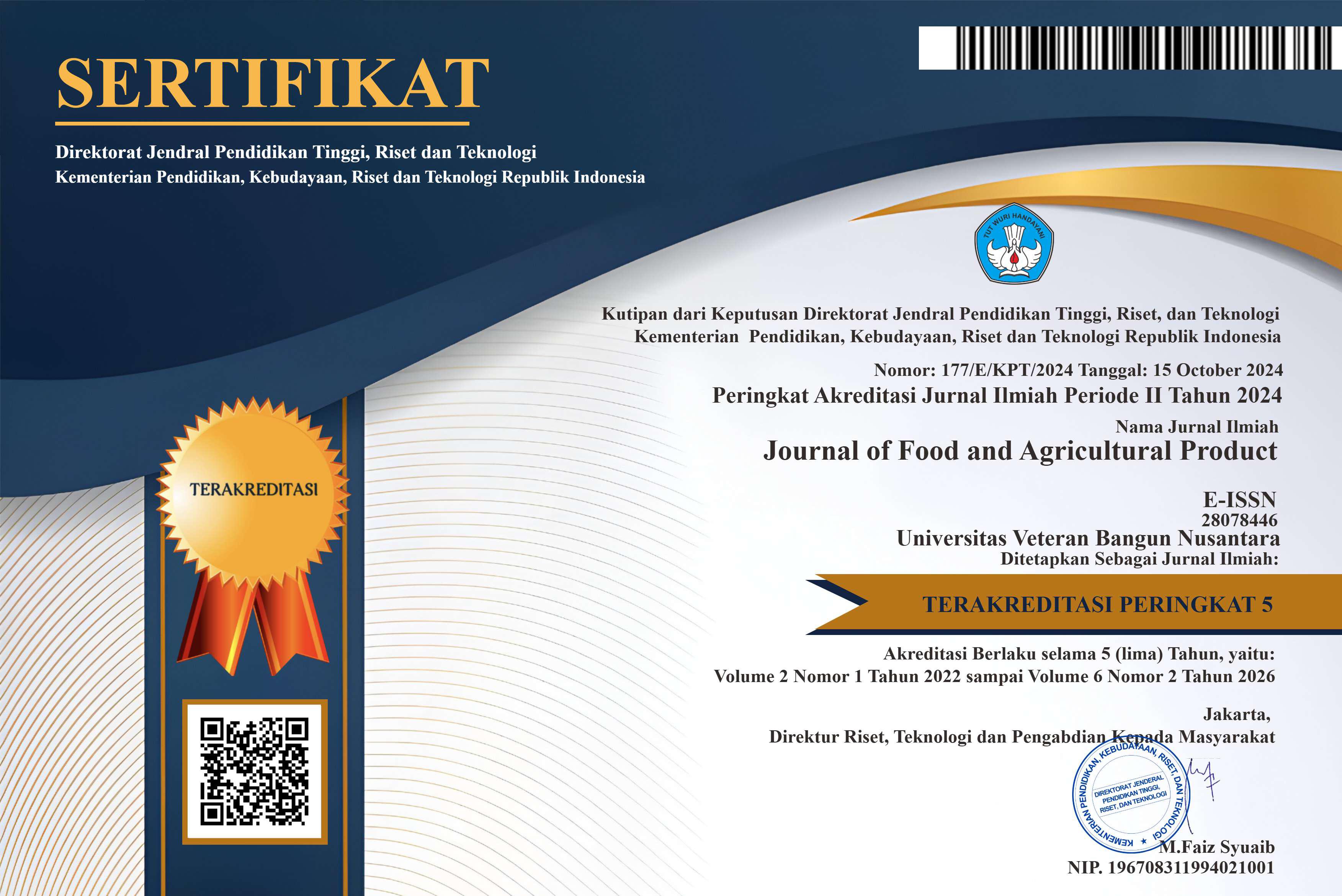Efek Lama Perebusan terhadap Aktivitas Antioksidan Air Rebusan Batang Brotowali (Tinospora crispa L.)
DOI:
https://doi.org/10.32585/jfap.v1i2.2076Abstract
This study aims to determine the effect of boiling time on the antioxidant activity of brotowali stem boiled water. The method used in this study is an experimental method carried out in the laboratory using a completely randomized design (CRD) with one factor, namely the effect of boiling water on brotowali stems with P1 treatment (5 minutes); P2 (10 minutes); P3 (15 minutes); P4 (20 minutes) and P5 (25 minutes). Each treatment was repeated 3 times to obtain 15 experimental units. Parameters observed included chemical parameters (antioxidant activity, total phenolic and flavonoid identification), physical parameters (color) and organoleptic (color, taste and aroma) by scoring and hedonic. The data from the chemical, physical and organoleptic observations were analyzed by analysis of diversity at a 5% significance level using the Co-Stat software and if there was a significant difference, then further tested with the orthogonal polynomial test (MOP) and the Honest Significant Difference test (HSD 5%) on the test. organoleptic. The results showed that the boiling time of brotowali stems had a significantly different effect on all parameters except the hedonic test for taste and aroma. Treatment P1 (5 minutes) was the best treatment with the best antioxidant activity of brotowali stem decoction by producing 25.4% antioxidant activity, total phenolic 7.07 mgGAE/100g, anthocyanidin type flavonoid group and having a yellowish green color, bitter taste. and does not have a typical brotowali aroma
Keywords: antioxidant activity, boiling, brotowali



